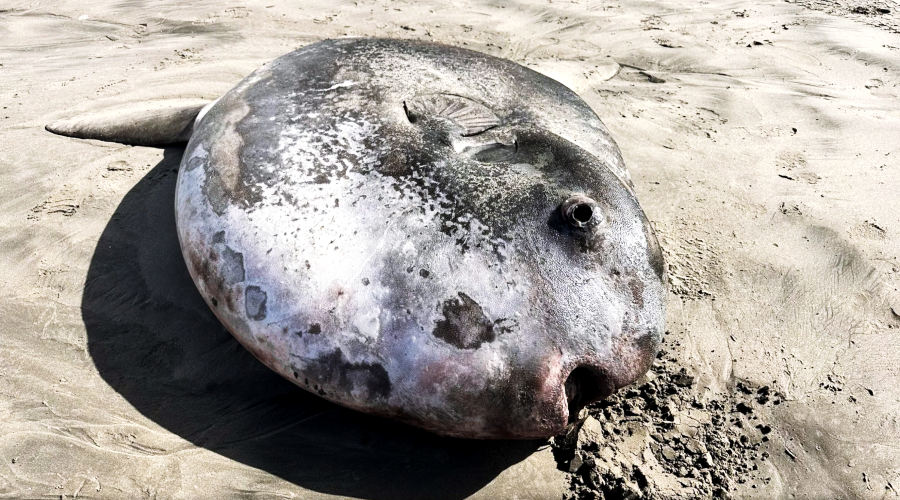News
Oregon, USA: Rare moonfish discovered on the beach
In 2012, Baltic Sea fishermen caught a moonfish off the coast of Rügen. It was very weak and died quickly. It was prepared for the German Oceanographic Museum in Stralsund, where previously caught moonfish had already been exhibited. This species has only been known for a few years. Recently, a giant moonfish has been spotted on the US West Coast, leaving researchers puzzled as to how it got there.

The 2.20 metre long fish was discovered on Gearhart beach on Monday, the Seaside Aquarium announced on Friday. Due to its tough skin, it is difficult for scavengers to dismember the carcass.
Moonfish, which feed on jellyfish, can grow up to three metres long and weigh two tonnes. It remains unclear how this specimen ended up in Oregon. Moonfish are frequently sighted far away from their actual habitat. In 2019, for example, a moonfish was washed ashore on the coast of California.
The fish belongs to the moonfish species Mola tecta, which was only discovered in 2017 and is actually native to thousands of kilometres away on the other side of the equator. New Zealand-based researcher Marianne Nyegaard, who first described the fish, became aware of the discovery in Oregon through pictures on social media and contacted the aquarium. According to her, it is the largest specimen of this species to have been studied to date.
- Triops – Survivors of prehistoric times, heroes of the universe - 17. April 2025
- Aquaristics in Italy – Underwater passion between the Dolce Vita and the Mediterranean - 12. April 2025
- Palaeontology: Giant penguins discovered in Peru - 2. April 2025